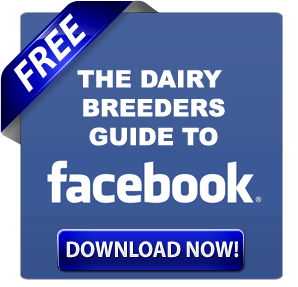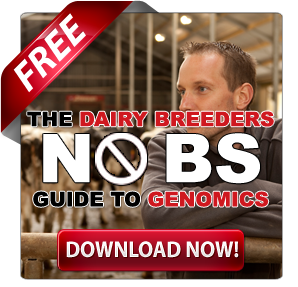Embryo transfer is revolutionizing commercial dairy farming. Once a niche practice, it’s now a game-changer for large-scale operations. Discover how this technology boosts genetic gains, improves fertility, and increases profits. Learn why savvy dairy farmers embrace ET to stay ahead in a competitive industry.
Large-scale dairy farming is changing fast, and a tool called embryo transfer (ET) is leading the charge. Once a niche practice, ET is now reshaping how large-scale dairy operations breed their cows. Why has it suddenly become so popular among large-scale dairy farms? Is it just a fad, or does ET hold the key to better cows and more significant profits for large dairy businesses? Let’s dive into embryo transfer and see why innovative large-scale dairy farms are jumping on board.
Why Embryo Transfer? Why Now for Large-Scale Dairy Farms?
Although embryo transfer is well-established, its adoption in large-scale settings is unprecedented. The reasons for this are as follows:
- Better Tech for Bigger Herds: Gone are the days of complicated surgeries. Today’s ET is more straightforward and practical for everyday use on large dairy farms.
- Money Matters for Large-scale Operations: As dairy farms grow and competition becomes more arduous, large-scale farmers must breed better cows faster. ET all lows them to do that, potentially producing multiple top-notch calves from one great cow in a year and scaling up genetic improvements quickly.
- Genomic Testing in Large Herds: New DNA tests give large-scale farmers a crystal-clear picture of their cows’ genetic potential across large populations. ET helps them make the most of this knowledge, speeding up herd improvement on a massive scale.
Dr. Tyler Dohlman, an expert collaborating with large dairy operations, states that embryo transfer enables Large-scale Dairy Farms to generate multiple high-quality calves from a single exceptional cow in a year, simplifying the acquisition of top-quality cows for large-scale operations.
The Numbers Don’t Lie: ET is Growing Fast in Large-Scale Dairy Farms
Let’s look at some hard facts relevant to large-scale operations:
- In 2021, over 1.4 million embryos were transferred into cows worldwide for breeding purposes, with a significant portion in large-scale settings.
- The number of lab-made embryos (IVP) used yearly in large dairies is much higher than those made the old-fashioned way.
- One vet clinic serving large-scale farms went from doing about 500 embryo transfers a year to over 1,700 in 2023.
ET is transitioning from solely for show cows to a crucial tool for dedicated large-scale dairy farms.
Why large-scale Farmers are Betting on ET
- Faster Genetic Improvement at Scale
ET lets large-scale dairy operators get more calves from their best cows. Top cows can have multiple offspring instead of one calf yearly, speeding up herd improvement across large populations. - Better Breeding in Tough Conditions for Large Herds
ET can help get cows pregnant when the weather is hot, or they have had trouble breeding. This is crucial for maintaining productivity in large, large-scale operations. - Access to Top Genetics Worldwide for Large-scale Dairy Farms
With ET, large-scale farmers can bring in top-notch genetics from anywhere in the world without shipping live animals. This means better cows and less risk of bringing in diseases to large herds. - Money in the Bank for Big Operations
While ET costs more upfront, it often pays off big time for large-scale farms. They can get more valuable calves that bring higher prices and produce more milk, multiplying profits across large herds. - More Flexible Herd Management in large-scale Settings
Et al., low- and large-scale farmers use their cows more strategically. Even cows that might not be great for breeding can carry valuable embryos, making them useful for longer and maximizing the value of each animal in the herd.
Quick Facts for Large-scale Dairy Farms:
- ET can boost pregnancy rates by up to 10% during hot weather compared to AI, which is crucial for maintaining production in large herds.
- Fresh embryos usually have better success rates (26.7%) than frozen ones (7.0%) in cows with trouble breeding, which is essential for managing fertility in large-scale operations.
- The number of lab-made embryos used in cows worldwide doubled between 2012 and 2020, with Large-scale Dairy Farms leading this trend.
Overcoming Hurdles: Making ET Work in Large Dairy Farms.
| ET Component | Cost Range |
|---|---|
| Drugs for Donor Cows | $232-$330 per cow |
| Veterinary Services | $280-$462 per cow |
| Embryo Freezing | $23-$33 per embryo |
| Recipient Cow Preparation | $18-$28 per cow |
Despite the significant benefits ET brings to large-scale operations, challenges exist. Here’s what large-scale farmers need to know:
- Costs at ScaleET isn’t cheap, primarily when implemented across large herds. Here’s a rough breakdown:
- Drugs to get lots of eggs from donor cows: $232-$330 per cow
- Vet services: $280-$462 per donor cow
- Freezing embryos: $23-$33 each
- Getting recipient cows ready: $18-$28 per cow
- Skilled Help for Large OperationsSuccessful ET programs in Large-scale Dairy Farms require experienced vets and technicians who can efficiently work with large numbers of animals. Partnering with the right people is key.
- Managing Recipient Cows in Big HerdsPicking the right cows to carry embryos and taking good care of them is crucial for success, especially when dealing with hundreds or thousands of animals.
- Embryo Quality for large-scale ProductionNot all embryos are created equal. Knowing how to pick the good ones is essential for getting cows pregnant and improving the herd on a large scale.
- Freezing Challenges for Large-Scale UseWhile frozen embryos are convenient for significant operations, they often don’t work as well as fresh ones. Improving freezing techniques is an ongoing challenge for large-scale use.
According to Dr. Jake Osborn, an ET expert who collaborates with Large-scale Dairy Farms, large dairy operations can effectively prepare multiple recipient cows simultaneously. This process allows for a series of calves from the same mating to be born in close succession, facilitating rapid genetic enhancements.
What’s Next for ET in Large-Scale Dairy Farming?
As ET technology keeps improving, some exciting things are on the horizon for significant dairy operations:
- In Vitro Breeding (IVB) for Large-Scale ProductionThis cutting-edge method combines DNA testing with lab techniques to create embryos. It could speed up breeding even more, perfect for Large-scale Dairy Farms looking to make rapid genetic gains.
- Better Freezing for large-scale UseNew ways to freeze embryos aim to make frozen ones work and fresh, giving large-scale farmers more flexibility in managing large-scale ET programs.
- DNA Testing Embryos in Large-scale SettingsWith the decreasing cost and improving quality of DNA tests, large-scale farmers can screen embryos for genetic traits before implanting them, ensuring more effective breeding in large herds.
- Combining with Other Tech for large-scale EfficiencyUsing et al. ong with sexed semen, advanced hormones, and precision management tools could lead to even better results in large dairy operations.
Economic Analysis: Is ET Worth It in the Long Run for Large-Scale Dairy Farms?
| Herd Size | Estimated 5-Year ROI |
|---|---|
| 100 Cows | 120% |
| 500 Cows | 150% |
| 1000+ Cows | 180% |
When thinking about using ET, large-scale farmers need to look beyond the initial costs and consider the long-term impact on their business:
Return on Investment (ROI) for Large Operations
- 100-cow herds: About 120% return over 5 years
- 500-cow herds: About 150% return over 5 years
- Herds with over 1000 cows can expect a return of approximately 180% over 5 years
These figures are particularly relevant to large-scale operations, as they show that ET becomes more economically viable as herd size increases.
Break-Even Point for Large-scale Use
ET’s cost-effectiveness ranges from $6.79 to $24.38 per transfer, compared to $20 for regular semen. While ET can yield profits for Large-scale Dairy Farms, the narrow margins necessitate meticulous management.
Long-Term Genetic Improvement in Large Herds
Over 15 years, large-scale herds using ET can see significant improvements in their cows. By year 15, the profit difference between AI and ET was only $8 per cow per year, favoring ET when considering higher prices for extra calves. This slight difference can add up to significant gains in large operations.
Seasonal Effects on Large-scale Production
ET can make milk production and the number of cows and calves milking more seasonal. Large-scale farms that can handle these changes might find ET more profitable, as it allows for more strategic management of large herds.
Costs Over Time for Big Dairies
- Profits might drop at first due to high embryo production costs
- Profits increase as better cows start producing milk
- By year 9, AI and ET might be equally profitable, but ET can provide long-term genetic advantages
Market Sensitivity for Large-scale Farmers
Several factors influence the success of ET in large-scale settings, including prices for extra calves, embryo costs, milk prices, and other market variables.
- Prices for extra calves: Higher prices make ET more profitable for large operations
- Embryo costs: Lower costs per transfer increase profits, which is especially important when doing many transfers
- Milk prices: Higher milk prices make genetic improvements more valuable across large herds
Risks to Consider for Large-scale Dairy Farms
- Higher upfront costs mean more financial risk but potentially higher rewards
- Variability in embryo production and success rates can affect returns, especially in large-scale operations
- Changes in milk and calf prices can impact the value of genetic improvements across entire herds
The Bottom Line
Embryo transfer is revolutionizing large-scale dairy farming, offering unprecedented opportunities for genetic improvement, increased fertility, and enhanced profitability. While challenges exist, the potential benefits for big dairy operations are too significant to ignore. As ET technology advances, forward-thinking farmers who embrace this innovation are poised to lead the industry. The future of dairy farming is here, and ET is at its forefront. For large-scale operators, the question isn’t whether you can afford to adopt ET but whether you can afford not to. With its potential for rapid genetic gains and increased productivity across hundreds or thousands of cows, ET could be the key to staying competitive in an ever-evolving industry. Are you ready to usher in a new era of exceptional dairy cows and set new benchmarks for excellence in your operation?
Key Takeaways:
- Embryo Transfer (ET) technology allows commercial dairy farmers to rapidly multiply top-quality genetics across large herds efficiently.
- ET is gaining popularity due to improved technologies, making the process feasible and affordable for large-scale operations.
- Using ET can result in more calves from superior cows, enhancing genetic gains, milk production, and potential profits.
- Key challenges include high initial costs and the need for technical expertise, but the long-term benefits can outweigh these hurdles.
- Continual advancements in ET techniques and complementary technologies promise even greater efficiencies for commercial dairy farms.
- Market sensitivity, including fluctuating calf and milk prices, can impact the economic viability of ET but also presents potential high-reward scenarios.
Summary:
Embryo transfer (ET) is changing the game for large dairy farms by helping them produce better cows and earn more money. It’s popular because it’s easy to use and offers big rewards. With ET, farmers can get several great calves from one top cow in a year, improving their herds fast. New genetic tests help farmers know precisely what their cows can pass down to future generations, making herd improvements even quicker. In 2021, over 1.4 million embryos were used worldwide, with many on large farms. Farmers love ET for quick genetic upgrades, dealing with harsh breeding conditions, and accessing top genetics worldwide without moving animals. There are challenges like costs and needing skilled people, but ET can be very successful for big dairy farms with the right team.
Learn more:
- The 50-Year Journey of ET and IVF: Indelible Footprints on the Landscape of Global Livestock Breeding
- How Dairy Farmers Can Benefit from Embryo Surrogacy
- Leveraging Herd Genotyping & Sexed Semen: A Game-Changer in Livestock Industry
 Join the Revolution!
Join the Revolution!
Bullvine Daily is your essential e-zine for staying ahead in the dairy industry. With over 30,000 subscribers, we bring you the week’s top news, helping you manage tasks efficiently. Stay informed about milk production, tech adoption, and more, so you can concentrate on your dairy operations.







 Join the Revolution!
Join the Revolution!





